 July 18, 2019 John E. Ross, KD8IDJ, Editor
| ||||||
No Consensus Reached for FCC on "Symbol Rate" Issues ARRL-initiated efforts for rival parties to reach consensus on issues raised in the so-called "Symbol Rate" proceeding have ended. In April, the FCC granted ARRL's request for a 90-day hold in the proceeding, FCC Docket WT 16-239, to provide an opportunity for ARRL to lead an effort to determine whether consensus could be reached on some or all of the issues that commenters raised in the FCC's proceeding. The FCC already has issued a Notice of Proposed Rulemaking in WT 16-239, which stemmed from ARRL's rulemaking petition RM-11708. Discussions were since widened to include issues raised in another Petition for Rule Making, RM-11831, filed by Ron Kolarik, K0IDT, that "In seeking the delay, it was the ARRL's intent to facilitate discussions between the opposing parties in an effort to explore the possibility of an agreed resolution that would better protect users of the Amateur Radio spectrum from interference and would permit all members of the Amateur Radio service to continue to contribute to the advancement of the radio art," ARRL Washington Counsel David Siddall, K3ZJ, said, summarizing the situation in a July 15 letter to the FCC. "The end purpose, if a binding agreement between the opposing parties could not be reached, was to provide the strongest possible basis for the ARRL to file its recommendations on a fair and equitable resolution of the issues." Siddall said that despite difficulties "partially attributable to the passions of the respective parties," ARRL was able to schedule meetings with both sides and, eventually, facilitate joint discussions among the respective parties. Siddall said in his letter, "At the beginning of our meetings there emerged consensus on the issues to be discussed. By the end, the parties had reached consensus on some of the issues, but not all. Despite our best efforts, some of the parties did not agree to submit to the Commission any of the recommendations on which there had been an apparent consensus, having negotiated with an 'all or nothing' approach." Despite the disappointing conclusion, Siddall expressed confidence that a better understanding of issues and positions of the various interests exists among all of the parties who participated in the in-person meetings and teleconferences, and that this will have an overall positive effect upon the outcome of the proceeding. Read more. HWN and National Hurricane Center's WX4NHC Activate for Tropical Storm Barry Responding to then-Tropical Storm Barry, the Hurricane Watch Net (HWN) and WX4NHC -- the Amateur Radio station at the National Hurricane Center (NHC) in Miami -- activated on July 12. The HWN's primary frequency is 14.325 MHz with 7.268 MHz as a secondary channel, depending upon propagation. This time, the HWN fired up on both bands.
The HWN works in concert with WX4NHC at the NHC to help forecasters get a better sense of ground-level meteorological data such as wind speed, barometric pressure, and rainfall. Forecasters predicted that Barry would develop into a Category 1 hurricane before making landfall, and the storm lived up to those expectations. Dangerous storm surge, heavy rainfall, and high wind conditions were expected across the north-central Gulf Coast. The major fear was that heavy rainfall could generate additional flooding in the region. NHC forecasters said Barry was expected to produce total rain accumulations of 10 to 20 inches over south-central and southeast Louisiana, as well as over southwest Mississippi, with isolated maximum amounts of 25 inches. The actual rainfall was somewhat less but still significant.
The HWN officially secured operations for Hurricane Barry on July 13, after the storm made landfall on the Louisiana coast. Graves said the activation for Barry "proved to be a good training platform for our newest members" and an opportunity to test new systems. WX4NHC remained active for 2 days, gathering surface reports from stations located in the affected areas for use by forecasters. "We received many reports about the flooding, downed trees, road closures, and power outages," said WX4NHC Assistant Coordinator Julio Ripoll, WD4R. He expressed gratitude for the support of the Hurricane Watch Net and the EchoLink VoIP Hurricane Net (WX_TALK). "Remember, the season is still young, so please, don't drop your guard," Graves advised Centenarian Radio Amateur's Efforts Helped Pave the Way to the Moon The Nashville Tennessean newspaper recently featured the story of a 104-year-old ARRL member who contributed to NASA's effort to put the first humans on the moon 50 years ago this month. Cary Nettles, W5SRR, of Columbia, Tennessee -- who calls himself the nation's oldest rocket scientist still alive -- was a NASA project manager and research engineer on rocket propulsion systems in the 1950s and 1960s.
On July 16, 1969, a Saturn V rocket with a liquid hydrogen-fueled second stage carried astronauts Neil Armstrong, Buzz Aldrin, and Michael Collins to their rendezvous with the moon. Nettles retired from NASA the following year. Nettles got his Amateur Radio license in 1945 and remains active on 40 meters as well as on VHF and UHF repeaters. He is a member of the Maury Amateur Radio Club. In addition to sustaining his interest in ham radio over the decades, Nettles is an enthusiast of "large-scale" steam trains, which he works on in his basement. Look for him Tuesdays at 1400 UTC on 7.215 MHz on the Steam Railroad Net. In 2015, the year he turned 100, the ARRL Tennessee Section presented Nettles with its Elder Statesman Award. The Doctor Will See You Now! "Antenna Polarization" is the topic of the new (July 18) episode of the ARRL The Doctor is In podcast. Listen...and learn!
Every 2 weeks, your host, QST Editor-in-Chief Steve Ford, WB8IMY, and the Doctor himself, Joel Hallas, W1ZR, will discuss a broad range of technical topics. You can also email your questions to doctor@arrl.org, and the Doctor may answer them in a future podcast. Enjoy ARRL The Doctor is In on Apple iTunes, or by using your iPhone or iPad podcast app (just search for ARRL The Doctor is In). You can also listen online at Blubrry, or at Stitcher (free registration required, or browse the site as a guest) and through the free Stitcher app for iOS, Kindle, or Android devices. If you've never listened to a podcast before, download our beginner's guide. Major WSJT-X Upgrade Boosts FT4 into "a Finished Protocol for HF Contesting" The WSJT Development Group has announced the "general availability" release of WSJT-X version 2.1.0. This major upgrade formally introduces FT4 as "a finished protocol for HF contesting." Users have been advised to discontinue using any "release candidate" (beta) versions of the software that WSJT-X version 2.1.0 supplants. The latest edition of the popular digital software suite also includes improvements and bug fixes in several areas, including FT8. The list includes:
The WSJT-X Development Group is providing a separate WSJT-X version 2.1.0 installation package for 64-bit Windows that offers significant improvements in decoding speed. A detailed list of program changes since WSJT-X version 2.0.1 is included in the cumulative release notes. Upgrading from earlier versions of WSJT-X should be seamless, with no need to uninstall a previous version or to move any files. Installation packages for Windows, Linux, and Macintosh are available. Visit the FT8/FT4/JT9: WSJT 2-Way Narrow Modes for Amateur Radio Facebook page for additional information. Read more. The K7RA Solar Update Tad Cook, K7RA, Seattle, reports: Very low solar activity continues; there were no sunspots. Over the past week, average daily solar flux changed insignificantly, from 67.1 to 67. Average daily planetary A index changed from 8.4 to 5.9, while mid-latitude A index changed from 8.6 to 6.7. Conditions remain quiet. Predicted solar flux is 68 for July 18 - 24, and 67 for July 25 - August 31.
On July 17, Spaceweather.com reported a coronal hole spewing a stream of solar wind, with arrival expected to cause minor geomagnetic upset in the July 19 - 20 time frame. Spaceweather also reported that, so far this calendar year, 64% of all days were without sunspots. Last year the total percentage of spotless days was 61%, 28% in 2017, 9% in 2016, and nearly 0% in 2011 - 2015. N4SO in Alabama reported some success on July 13 running FT8 with 15 W while testing a new antenna. He contacted stations in Texas, California, Arizona, Colorado, Utah, Oregon, and Guatemala. On July 12, KD4SR reported contacting Puerto Rico, Haiti, Hawaii, Brazil, and Canada from central Florida on 6 meters, running FT8 and 100 W to modest antennas. Sunspot numbers for July 11 - 17 were 0, 0, 0, 0, 0, 0, and 0, with a mean of 0. The 10.7-centimeter flux was 67.1, 66.8, 66, 67.2, 67.1, 67.2, and 67.8, with a mean of 67. Estimated planetary A indices were 8, 5, 6, 5, 7, 4, and 6, with a mean of 5.9. Middle latitude A index was 9, 5, 6, 6, 8, 5, and 8, with a mean of 6.7. A comprehensive K7RA Solar Update is posted Fridays on the ARRL website. For more information concerning radio propagation, visit the ARRL Technical Information Service, read "What the Numbers Mean...," and check out K9LA's Propagation Page. A propagation bulletin archive is available. Monthly charts offer propagation projections between the US and a dozen DX locations. Share your reports and observations. Just Ahead in Radiosport
See the ARRL Contest Calendar for more information. For in-depth reporting on Amateur Radio contesting, subscribe to The ARRL Contest Update via your ARRL member profile email preferences. New Summer EURAO Party to Premier FT4 The motto of the new European Radio Amateurs' Organization (EURAO) Summer Party is "Premiering FT4." This is not a contest but an on-the-air radio gathering with some suggested guidelines. The A new "general availability" release of WSJT-X that includes the latest FT4 protocol for HF contesting was released on July 15 as part of WSJT-X 2.1.0. FT4 is designed to be suitable for contesting in a manner similar to RTTY. Recommended frequencies for FT4 are 3.595, 7.090, 10.140, 14.140, 18.104, 21.140, 24.919, 28.180, 50.318, and 144.170 MHz. Exchanges are limited to what FT4 can accommodate, such as call sign, grid square, and signal report. For statistical purposes, EURAO is asking participants to submit logs in ADIF format, with your call sign as the file name. No results will be published, only statistical information. World Wide Radio Operators Foundation Announces Global Digital DX Contest The World Wide Radio Operators Foundation (WWROF), in collaboration with the Slovenia Contest Club (SCC), has announced the World Wide Digi DX Contest (WW Digi), which it hopes will become an annual event. The inaugural running of the 24-hour contest will take place on August 31 - September 1. The new contest aims to tap into the enthusiasm being generated by the new digital modes pioneered by Joe Taylor, K1JT, and the WSJT-X Development Group. Participants will use FT4 and FT8 on 160, 80, 40, 20, 15, and 10 "This will encourage operators to seek out long-distance, weak-signal contacts that highlight the technical advantages of the new digital modes," WWROF's announcement said. To encourage activity across all bands, each new two-character grid field contacted on each band will be a multiplier. The final score will the product of total contact points and grid field (i.e., the initial two letters) contacts. Single-operator and multioperator entries are invited to take part. "The contest has been designed to enable making contacts utilizing standard WSJT-X software behavior, making it easy for non-contesters to participate," the announcement said. "At the same time, the contest supports some new techniques that will encourage operating innovation, such as permitting stations to work up to three 'QSO streams' on a band at one time. Robotic operation is specifically prohibited in order to keep the human element as part of the game." Plaques will be awarded to top scorers. Read more. Dayton Hamvention 2019 Attendance Approaches All-Time Peak The Hamvention Executive Team announced July 15 that attendance at Dayton Hamvention® 2019 was 32,472, the second-largest ever. This marks the highest attendance recorded since Hamvention moved from Hara Arena to the Greene County Fairgrounds and Exposition Center in Xenia, Ohio. This year's attendance also approached an all-time Hamvention high. Attendance at the show peaked in 1993, while Hamvention was still being held at Hara Arena, at 33,669, before the 1996 change in date from April to May. Last year, Hamvention welcomed 28,417 visitors in its second year in Xenia. Attendance in 2016 for the show's final year at Hara was 25,364. Hamvention hosted the ARRL 2019 National Convention, and both embraced the theme of "Mentoring the Next Generation."
Hamvention officials suggested that a small factor behind the increased attendance might have been the free admission on Sunday, an effort to allow local non-hams to experience Hamvention. Free Sunday admission is expected to be continued next year. The world's largest Amateur Radio exposition, Dayton Hamvention is sponsored by the Dayton Amateur Radio Association (DARA) every third full weekend in May. Hamvention 2020 will take place on May 15, 16, and 17. Read more. IARU Represents Amateur Radio at CEPT Meetings International Amateur Radio Union Region 1 (IARU R1) reports that a further meeting to address the topic of Wireless Power Transmission (WPT) took place earlier this month. A subgroup of the European Conference of Postal and Telecommunications Administrations (CEPT) Committee SE24, charged with work on a report on generic WPT devices, met in Copenhagen, Denmark in early July. IARU Region 1 President Don Beattie, G3BJ, provided input on projections of harmful emissions from WPT systems -- both generic and WPT for electric vehicles -- operating at existing harmonic emission limits. IARU also reported on tests carried out on small WPT devices, and a full report is to be considered at the next meeting in September. IARU continues to argue for tighter emission limits on harmonics and other IARU also was represented at a recent meeting in Switzerland of the CEPT Project Team D. This was the last of the CEPT project team meetings preparing European Common Proposals (ECP) for a number of agenda items for World Radiocommunication Conference 2019 (WRC-19) this fall in Egypt. WRC-19 agenda item 1.1, which addresses the possibility of a "harmonized" Region 1 allocation at 50 MHz, was the key issue to be resolved. The project team agreed on the text of an ECP for WRC-19, which, if adopted by the delegates, would see an entry in the International Table of Allocations for Region 1 and allocate 50 - 52 MHz to Amateur Radio on a secondary basis. In addition, the team agreed upon the addition of a footnote to the International Table to permit individual CEPT countries to introduce a national primary allocation in the 50.0 - 50.5 MHz subband. IARU will attend the final meeting of CEPT's Conference Preparatory Group (CPG) in late August and finalize CEPT's input to WRC-19. That meeting will consider a proposal by France to allocate 144 - 146 MHz to the Aeronautical Service on a primary basis. 2018 Leonard Award for Outstanding Video Journalism Presented ARRL Hudson Division Director Ria Jairam, N2RJ, and Vice Director Bill Hudzik, W2UDT, recently presented the ARRL 2018 Leonard Award for Outstanding Video Journalism to NJTV public television correspondent Andrew Schmertz. The presentation took place in at NJTV in Newark, New Jersey.
Schmertz was recognized for his story that featured interviews with New Jersey Institute of Technology (NJIT) Assistant Research Professor Nathan Frissell, W2NAF, co-founder of HamSCI and the Solar Eclipse QSO Party, as well as numerous faculty members, members of the NJIT Amateur Radio station K2MFF, and attendees at a February 2018 HamSCI conference at NJIT that Frissell spearheaded. The conference focused on the significance of measuring the effects of solar activity on radio communication. Through HamSCI, Frissell was instrumental in enlisting the global Amateur Radio community to gauge the effects of the August 2017 solar eclipse on propagation. The ARRL Board of Directors conferred the Leonard Award on Schmertz upon recommendation of the ARRL Public Relations Committee, which oversees the Leonard Awards for Outstanding Journalism in print, audio, and video. The award's namesake is the late CBS News President Bill Leonard, W2SKE. In Brief...
Upcoming ARRL Section, State, and Division Conventions
Find conventions and hamfests in your area.
. .
Subscribe to...
Free of charge to ARRL members...
| ||||||
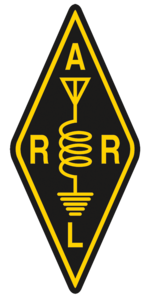 seeks, "to ensure Amateur Radio digital modes remain openly decodable and available for monitoring" by the FCC and by other third parties, including other radio amateurs. His petition also aims to limit Automatically Controlled Digital Stations (ACDS) to identified subbands on HF, to reduce interference. Last month, ARRL filed an
seeks, "to ensure Amateur Radio digital modes remain openly decodable and available for monitoring" by the FCC and by other third parties, including other radio amateurs. His petition also aims to limit Automatically Controlled Digital Stations (ACDS) to identified subbands on HF, to reduce interference. Last month, ARRL filed an 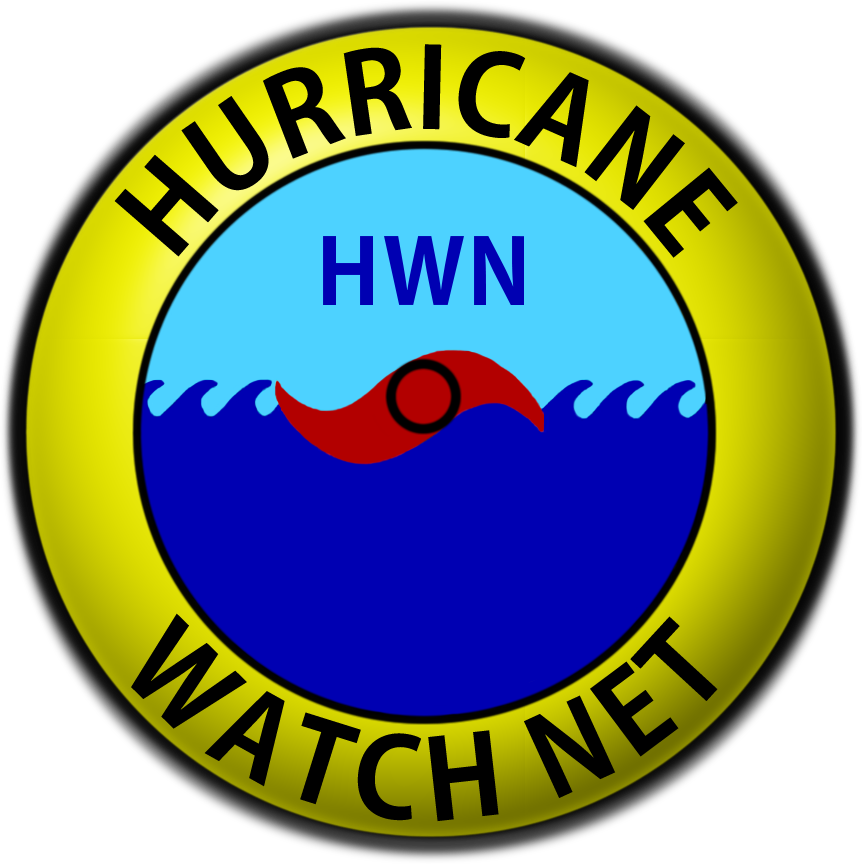 Net Manager Bobby Graves, KB5HAV, noted that the HWN would be available to provide back-up communication to official agencies in the affected area and would collect and report "significant damage assessment data" to FEMA officials at the National Hurricane Center.
Net Manager Bobby Graves, KB5HAV, noted that the HWN would be available to provide back-up communication to official agencies in the affected area and would collect and report "significant damage assessment data" to FEMA officials at the National Hurricane Center.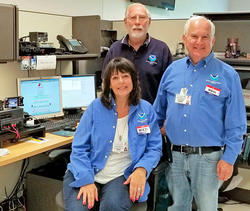
.JPG) While working on the Centaur second-stage rocket program, Nettles determined that the rocket engine failures NASA was experiencing were a result of misdirected exhaust destroying the vehicles' engines. Nettles told the Tennessean he came up with an "exhaust pipe" that solved the problem. In May 1966, an Atlas-Centaur launcher propelled the first Surveyor lander toward the moon. That year, NASA awarded Nettles and colleague Ed Jonash with its Distinguished Service Medal for "their superhuman effort in turning the troubled rocket into a reliable upper stage," according to a 2004 NASA publication, "Taming Liquid Hydrogen -- The Centaur Upper Stage Rocket 1958 - 2002."
While working on the Centaur second-stage rocket program, Nettles determined that the rocket engine failures NASA was experiencing were a result of misdirected exhaust destroying the vehicles' engines. Nettles told the Tennessean he came up with an "exhaust pipe" that solved the problem. In May 1966, an Atlas-Centaur launcher propelled the first Surveyor lander toward the moon. That year, NASA awarded Nettles and colleague Ed Jonash with its Distinguished Service Medal for "their superhuman effort in turning the troubled rocket into a reliable upper stage," according to a 2004 NASA publication, "Taming Liquid Hydrogen -- The Centaur Upper Stage Rocket 1958 - 2002." Sponsored by
Sponsored by 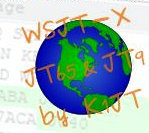 FT8 waveform generated with GMSK and fully backward compatible
FT8 waveform generated with GMSK and fully backward compatible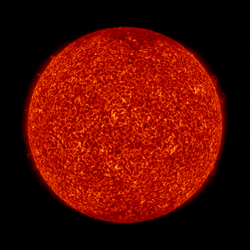 The predicted planetary A index is 5 on July 18 - 22; 8 on July 23; 5 on July 24 - 27; 8 on July 28; 5 on July 29 - August 3; 8, 15, 15, and 8 on August 4 - 7; 5 on August 8 - 10; 10, 12, and 8 on August 11 - 13; 5 on August 14 - 23; 8 on August 24; 5 on August 25 - 30, and 8 on August 31.
The predicted planetary A index is 5 on July 18 - 22; 8 on July 23; 5 on July 24 - 27; 8 on July 28; 5 on July 29 - August 3; 8, 15, 15, and 8 on August 4 - 7; 5 on August 8 - 10; 10, 12, and 8 on August 11 - 13; 5 on August 14 - 23; 8 on August 24; 5 on August 25 - 30, and 8 on August 31. event is set for July 27 - 28 UTC.
event is set for July 27 - 28 UTC.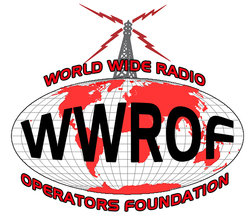 meters. The WW Digi will utilize a distance-based scoring system, with participants earning points based on the distance between grid square centers of the two stations in a given contact.
meters. The WW Digi will utilize a distance-based scoring system, with participants earning points based on the distance between grid square centers of the two stations in a given contact..jpg) "Our early indications were that 2019 would be a big year, and it lived up to our expectations," Hamvention General Chair Jack Gerbs, WB8SCT, said. "Our more than 700 volunteers worked hard to ensure that we presented a great show for our visitors. It wouldn't have been possible without them. I also want to thank all our vendors and visitors and hope they will all be back next year."
"Our early indications were that 2019 would be a big year, and it lived up to our expectations," Hamvention General Chair Jack Gerbs, WB8SCT, said. "Our more than 700 volunteers worked hard to ensure that we presented a great show for our visitors. It wouldn't have been possible without them. I also want to thank all our vendors and visitors and hope they will all be back next year."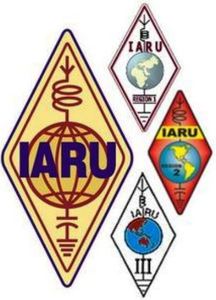 spurious emissions from WPT systems, which have the potential to cause sustained harmful interference to incumbent radio services.
spurious emissions from WPT systems, which have the potential to cause sustained harmful interference to incumbent radio services..jpg)
-from-website.JPG) The ARRL Board of Directors will meet July 19 - 20 in Windsor, Connecticut, for its second meeting of 2019. According to the
The ARRL Board of Directors will meet July 19 - 20 in Windsor, Connecticut, for its second meeting of 2019. According to the .jpg) Language in the Federal Aviation Administration (FAA)
Language in the Federal Aviation Administration (FAA) .jpg) AMSAT has issued a first call for papers for its anniversary symposium this fall. The 50th anniversary
AMSAT has issued a first call for papers for its anniversary symposium this fall. The 50th anniversary 







